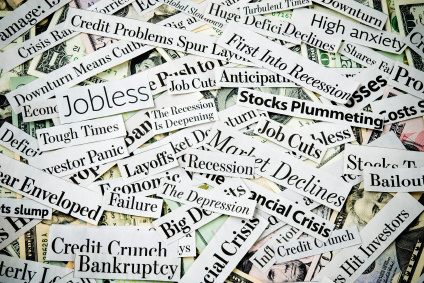Experienced Investor
10 years on from the financial crisis in 10 charts

It is now 10 years since the global financial crisis. Here are 10 charts showing how the investment and personal finance landscape has changed in that time.
Ten years on from the global financial crisis, Fidelity International examines ten charts showing how the world has changed since this defining moment – and the lessons learned:
Best performing asset classes:
Tom Stevenson, investment director for personal investing at Fidelity International, said: “The cumulative returns of high yield bonds and emerging markets over the past decade have pipped US equities. Bonds have benefited from the collapse in interest rates in the wake of the financial crisis but without first suffering the savage bear market that equities experienced in 2008 and the start of 2009.”
UK interest rates:
Maike Currie, investment director for personal investing at Fidelity International, said: “Record low interest rates have been good news for borrowers – those with mortgages and credit card debit have enjoyed a prolonged period of very low rates. In fact, there is an entire generation of homeowners who have never experienced an interest rate rise since buying their first homes. But for those who have been prudent with their money – savers and investors – the environment of perennially low interest rates has hurt.”
Cash vs. stock markets:
UK sectors performance:
Stevenson said: “Spotting the winners and losers ahead of time is no simple matter and putting your eggs in a variety of baskets is the best way to ensure that you gain exposure to the sectors and asset classes that do end up delivering good performance.
“This chart also shows how stock market returns are to a large degree determined by the price an investor pays at the outset. Buying at a low valuation stacks the odds in your favour, while paying over the odds makes it very difficult to generate an acceptable return over time.”
Stocks & shares ISA allowance:
Performance of global stock markets:
Stevenson said: “It comes as little surprise that the US has led the recovery since the financial crisis. The authorities moved swiftly to slash interest rates, inject cash into the economy via quantitative easing and, perhaps most importantly, re-capitalise the banking system. The US is also the spiritual home of the best performing sector over the period, technology.
“However, while it has paid to stick with the US throughout the post-crisis upswing, it is now one of the most expensive markets in the world and there are other regions which offer better value for investors, namely Asia Pacific, Europe and Japan.”
Inflation – UK CPI:
Wage growth:
Earnings have flatlined for almost a decade. Currie attributes this to underemployment: people working part-time who want a full-time job or hidden unemployment: people who are not actively looking for work but who would re-join the workforce if the job market were stronger.
Pension allowances:
The value of the pound (GBP to USD)
Stevenson said: “Sterling has been on the back foot since the EU referendum, but it has traded in a range between $1.20 and $1.30 for the past nine months or so, shrugging off a deterioration in economic conditions and intensifying political concerns. That suggests to me that the bottom may have been reached versus the dollar. Against the euro things may well get worse before they improve, however. The economic outlook in Europe is better and there is much less political uncertainty.”









